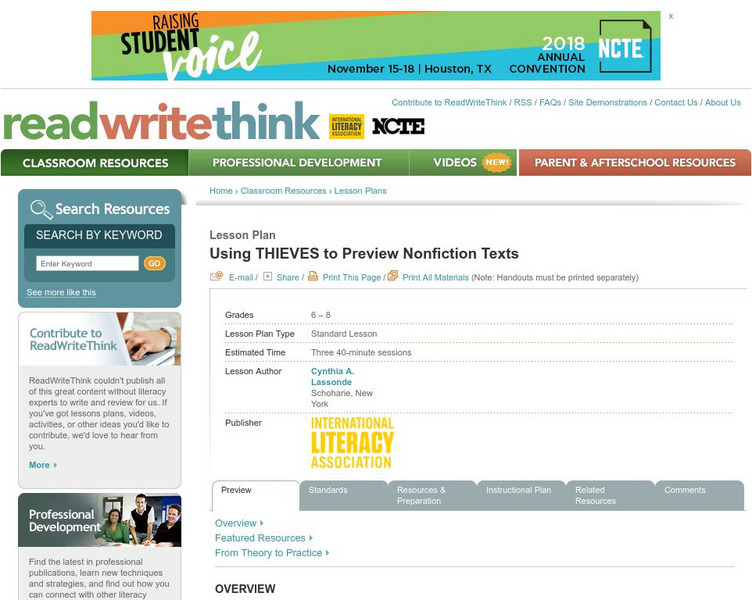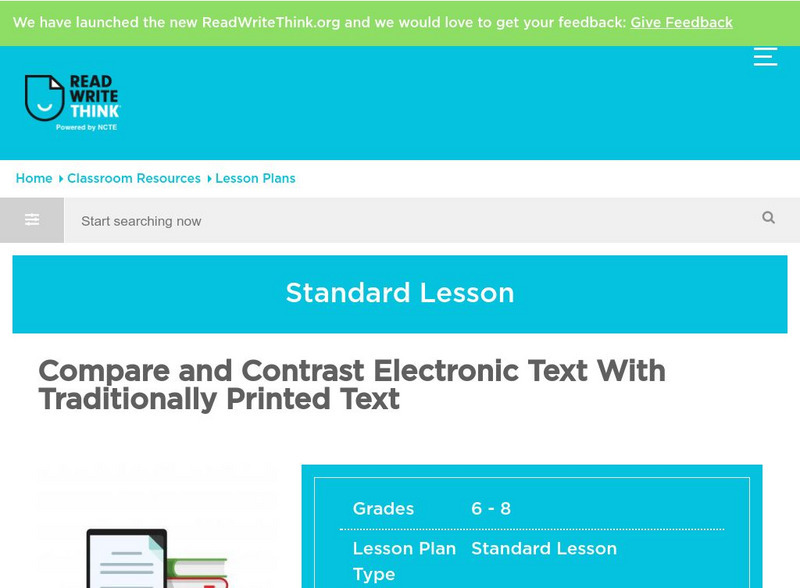ReadWriteThink
Read Write Think: Exploring How Section Headings Support Understanding
Teaching students to pay attention to headings and titles as they read? Here you'll find a practical application for using an expository text to apply the concept of using headings. Geared toward older elementary students, but...
ReadWriteThink
Read Write Think: Expository Escapade: Detective's Handbook
Working on higher-level thinking skills with your readers is made easier with this lesson plan. You will have your learners connect with and analyze a mystery story at their grade-appropriate level. Lesson plan, printable worksheets, and...
Colorado State University
Writing@csu Guide: Understanding Writing Situations
In this guide, you can learn more about the situations in which writers and readers find themselves and the physical, social, cultural, and historical contexts that shape them. Click on each of the links on the right to learn about the...
ReadWriteThink
Read Write Think: Scaffolding Summarization With Fishbone Mapping
Lesson that teaches students how to find important and significant information while reading text. After locating information through strategies, students learn how to summarize content-area text. A downloadable fishbone template is linked.
University of Sydney (Australia)
The Write Site: Why & How to Use Sources
This University of Sydney reference explains the importance of using reputable sources in academic writings. Then the site provides steps to follow to assist students with using bibliographic sources. Click on the sections list to...
ReadWriteThink
Read Write Think: Using Thieves to Preview Nonfiction Texts
Contains plans for three lessons that introduce a nonfiction prereading strategy with the acronym THIEVES, which stands for Title, Headings, Introduction, Every first sentence, Visuals and vocabulary, End Questions, and Summary. In...
Other
Be Succinct! Writing for the Web
This article gives helpful information on how to write effectively for the web. Gives information on short texts, scannability, and hypertext structure.
ReadWriteThink
Read Write Think: Compare/contrast Electronic Text With Traditionally Printed Text
Lesson allows for middle school middle schoolers who are familiar with researching electronic sources to gain a deeper understanding of the benefits of online resources versus traditional print.
Polk Brothers Foundation Center for Urban Education at DePaul University
Depaul University: Center for Urban Education: Organize an Argument [Pdf]
This site provides a nonfiction graphic organizer that will help students organize an argument.
W. W. Norton
W. W. Norton: The Research Essay: Integrating Source Material Into the Essay
Information about integrating source material into an research essay. SL.11-12.2 Eval&Integrate sources
Education.com
Education.com: w.k.2 Worksheets
[Free Registration/Login Required] Choose from a variety of worksheets to help students practice writing to compose informative/explanatory texts.








![Depaul University: Center for Urban Education: Organize an Argument [Pdf] Graphic Depaul University: Center for Urban Education: Organize an Argument [Pdf] Graphic](https://d15y2dacu3jp90.cloudfront.net/images/attachment_defaults/resource/large/FPO-knovation.png)

